In the end it is my beginning.
The covers (front and back) of the catalog of the exhibition just inaugurated at Fondation Beyeler by Riehen / Basel, dedicated to Piet Mondrian they portray the face of the Dutch artist caught in the different seasons of life: youth and old age. He chose them Irma Boomone of the best known graphic designers in the world, the youngest to have received the Gutenberg Prize for her creative approach in “making books”, who was entrusted with the catalog of the exhibition Mondrian Evolution. A non-random choice that invites you to observe the 89 works from European and American public and private collections as Mondrian would have liked, hearing his words resonate in your heart and mind: “For me there is no difference between the first and the last jobs: they are all part of the same thing. I don’t feel the distance between the old and the new in art as such, but as a continuity ».
The exhibition itinerary, curated by Sam Keller And Ulf Küster, on the occasion of the 150th anniversary of the artist’s birth, he follows the path of the painter from the beginnings in the 1890s as a creator of landscapes to the arrival of geometric abstraction, for which he is famous, with De Stijl and the Neoplasticism between the 1920s and 1930s. And theevolution to which the title of the exhibition refers is not – as Ulf Küster writes – to be understood in a Darwinian and finalistic sense, but to be interpreted as “an accumulation of new experiences that lead to a new level of artistic development, and consequently to an understanding deeper”.
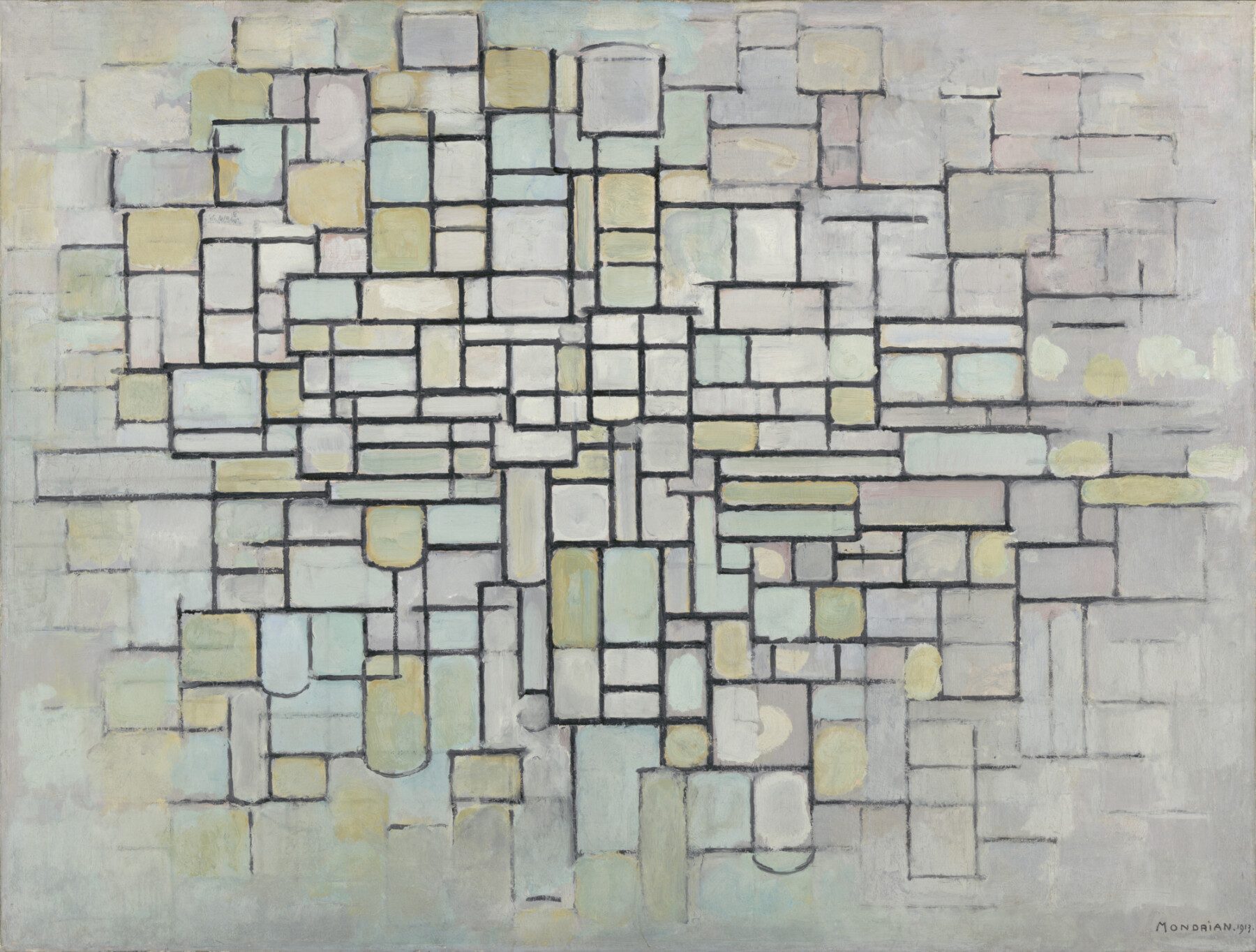
Oil on canvas, 88 × 115 cm, Kröller-Müller Museum, Otterlo, The Netherlands
(© 2022 Mondrian / Holtzman Trust | photo: Rik Klein Gotnik)
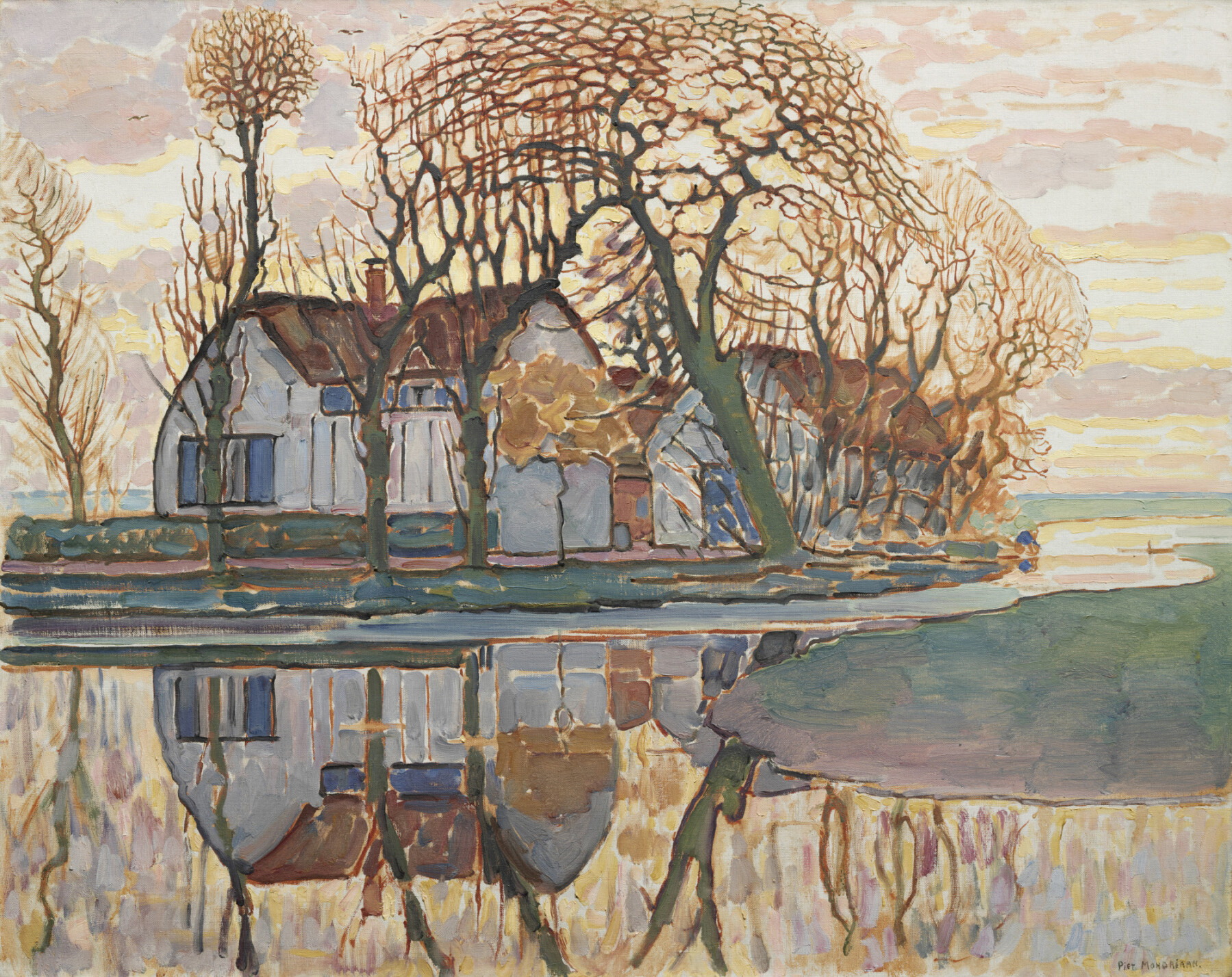
Oil on canvas, 86.3 x 107.9 cm, The Art Institute of Chicago, gift of Dolly J. van der Hoop Schoenberg
(© 2022 Mondrian / Holtzman Trust | photo: bpk / The Art Institute of Chicago / Art Resource, NY)
His art has welcomed different nourishment from early Romanticism, from Schopenaurian philosophy, from mystical and oriental thought and from the theosophical encyclopedia and it is a path that shows the process of decomposition and recomposition of reality refined over the years with almost mathematical rigor, in a constant search for balance and perfection, shape and color. We understand this as we turn our gaze to the works exhibited in the nine sections of the exhibition which often juxtaposes the first landscapes with later abstract creations; as the Composition n. 2 of 1913 and the series of paintings dedicated to Farm near Duivendrecht (especially that of 1916) whose trees show a crown that is a cubist-inspired pattern capable of trapping the viewer’s eye. His trees (Trees on the Gein with the rising moon1907), its mills (Mill at sunset1908), its dunes (Summer, dunes in Zeeland, 1910), while being affected by the distant echo of the Hague School, reveal that spark of originality that will lead him to travel new paths in search of an intense and profound spirituality. A spirituality that Mondrian, after having embraced the instances of Rudolf Steiner, tries to represent through horizontal (feminine) and vertical (masculine) lines, gradually abandoning curved lines to express a harmony and purity of proportions that he would later have led to his abstract compositions of planes and lines.
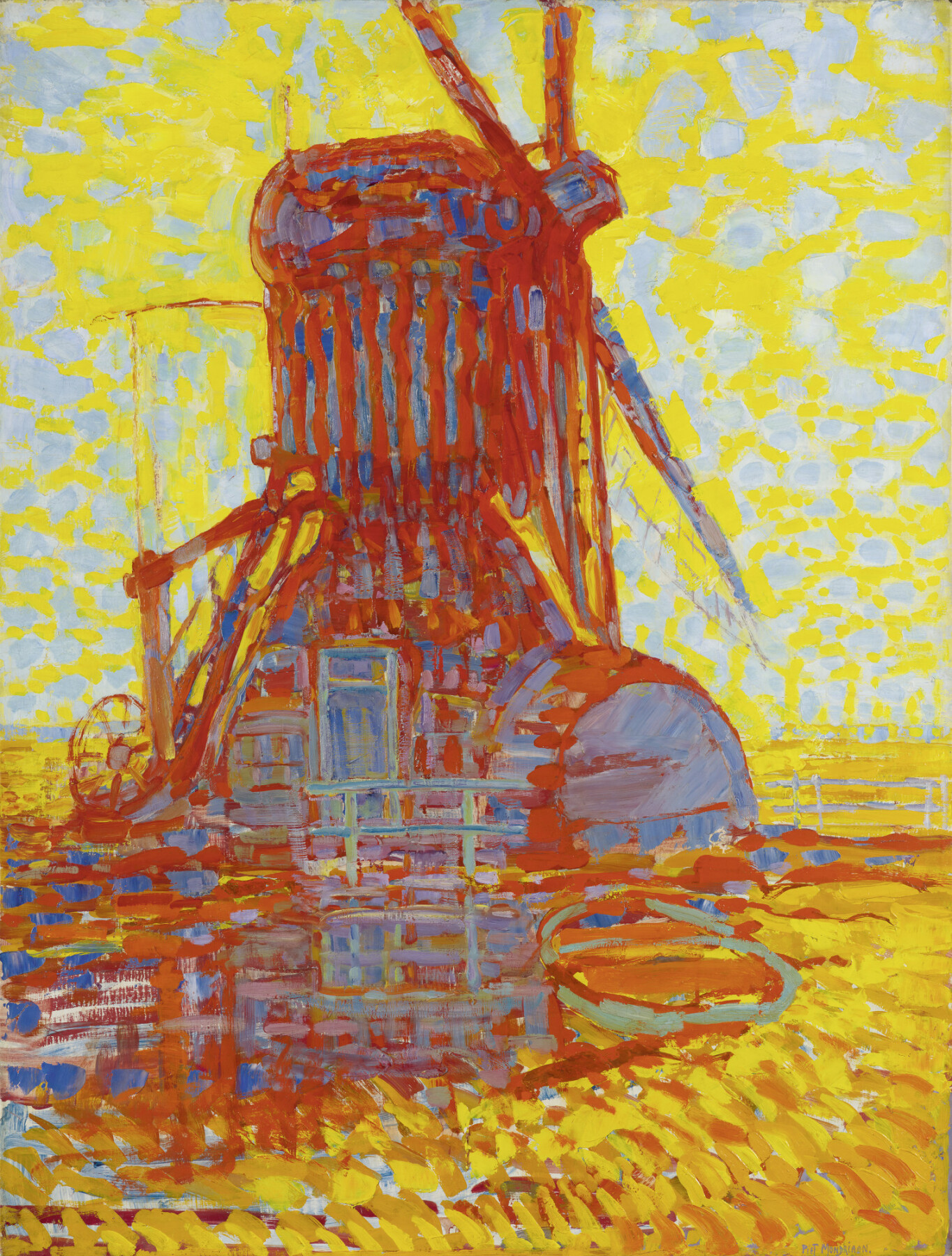
Oil on canvas, 114.8 x 87 cm, Kunstmuseum Den Haag, The Hague, The Netherlands, bequest of Salomon B. Slijper; this painting has been restored with the support of American Express
(© 2022 Mondrian / Holtzman Trust | photo: Kunstmuseum Den Haag)
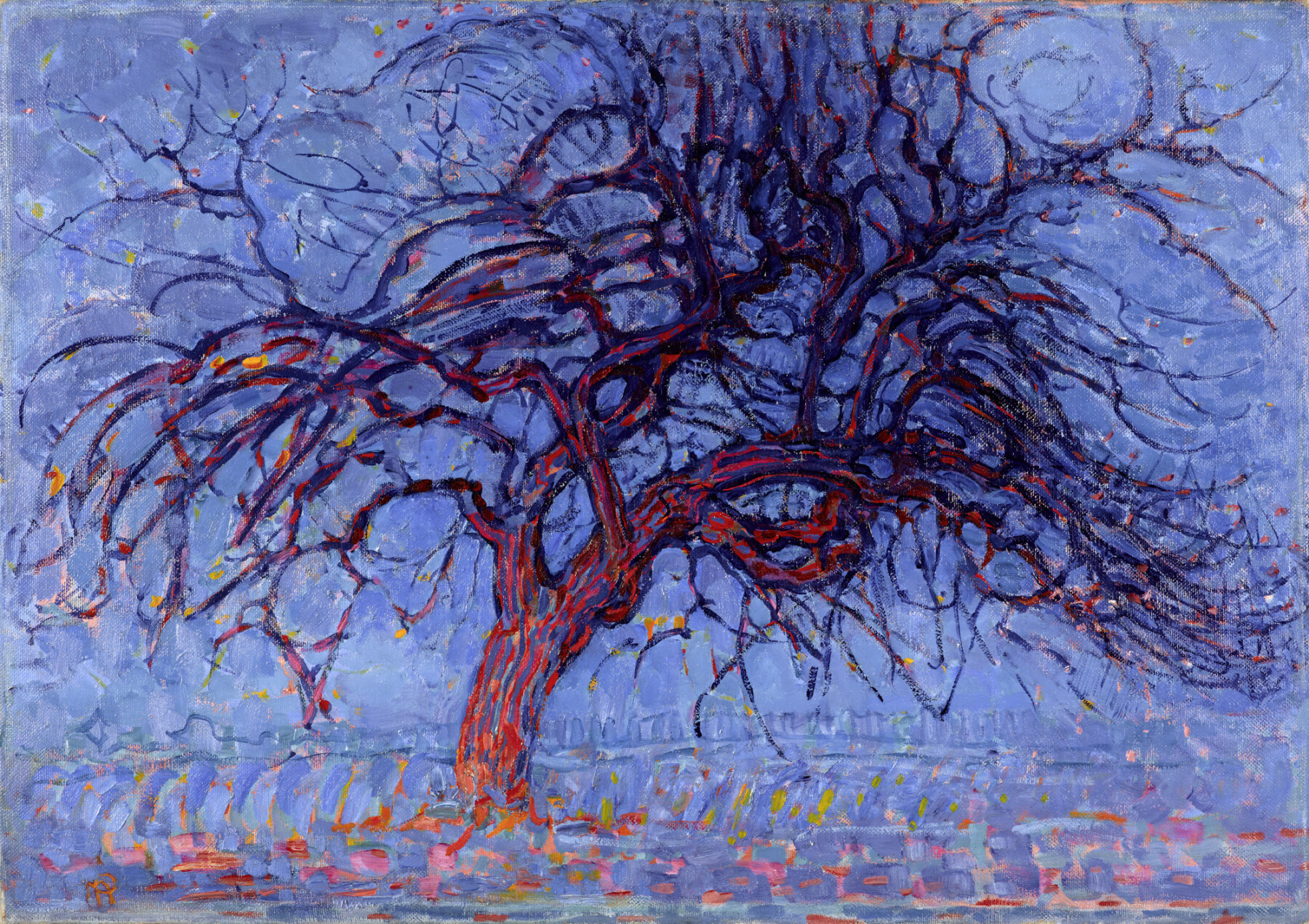
Oil on canvas, 70 x 99 cm, Kunstmuseum Den Haag, The Hague, The Netherlands
(© 2022 Mondrian / Holtzman Trust | Photo: Kunstmuseum Den Haag)
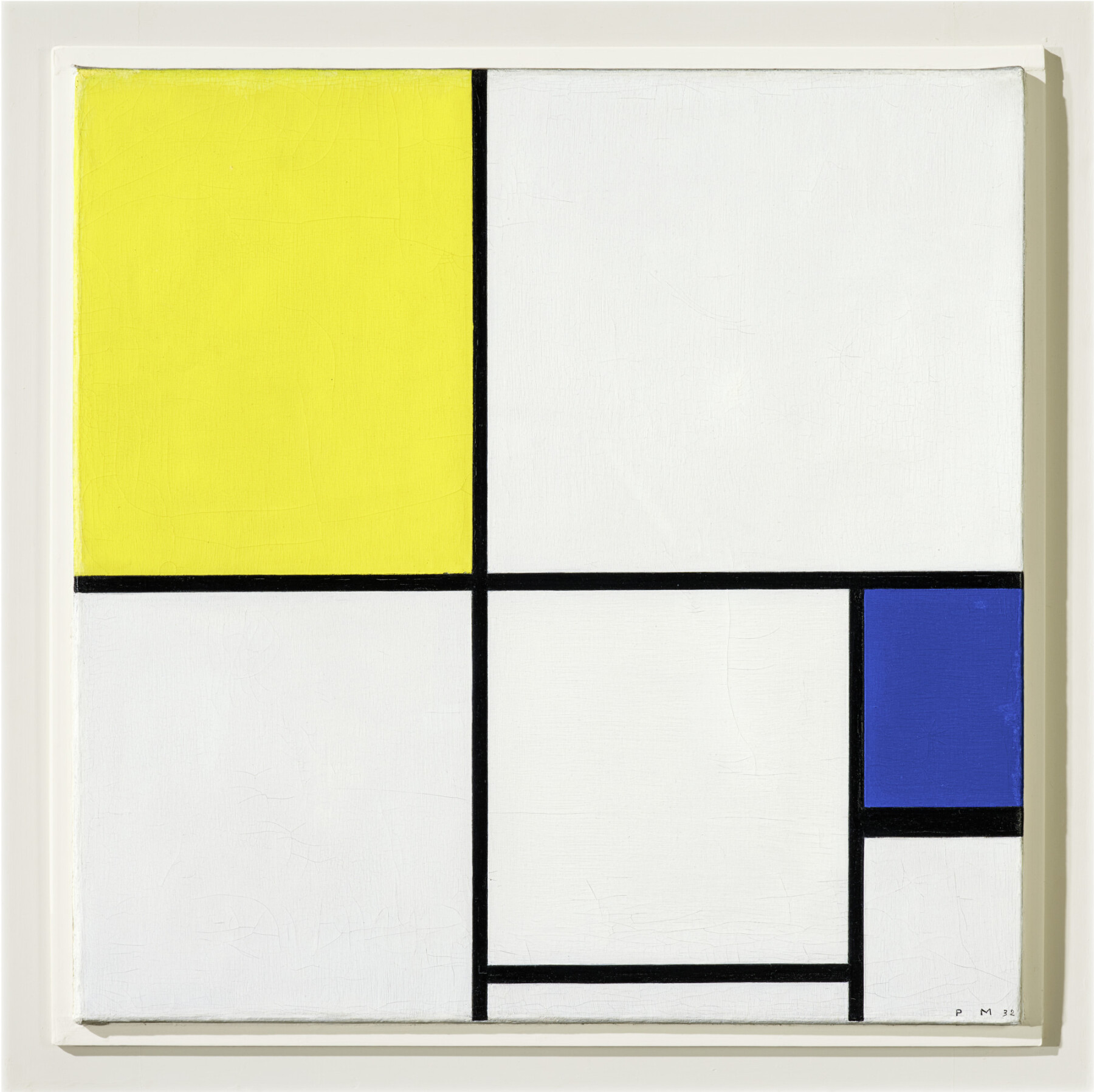
Oil on canvas, 55.5 x 55.5 cm, Fondation Beyeler, Riehen / Basel, Beyeler Collection; purchased with a donation from Hartmann P. and Cécile Koechlin-Tanner, Riehen
(© Mondrian / Holtzman Trust | photo: Robert Bayer, Basel)
To complete the exhibition, the Fondation Beyeler, which this year celebrates its 25th anniversary, projects Piet & Mondrian, a short film by Lars Kraume, one of the most significant German directors. The starting point for the film is Piet Mondrian’s essay from 1919/20 in the form of a dialogue Natural reality and abstract realityin which the painter collected his reflections and his thoughts on abstraction in art by teaching that “new art teaches us how to see reality clearly as it is and not the appearance of reality as we see it, nor of the life we live, but it is the expression of true reality and of true life ”.
In my end is my principle: Mondrian at the Fondation Beyeler – Frizzifrizzi
